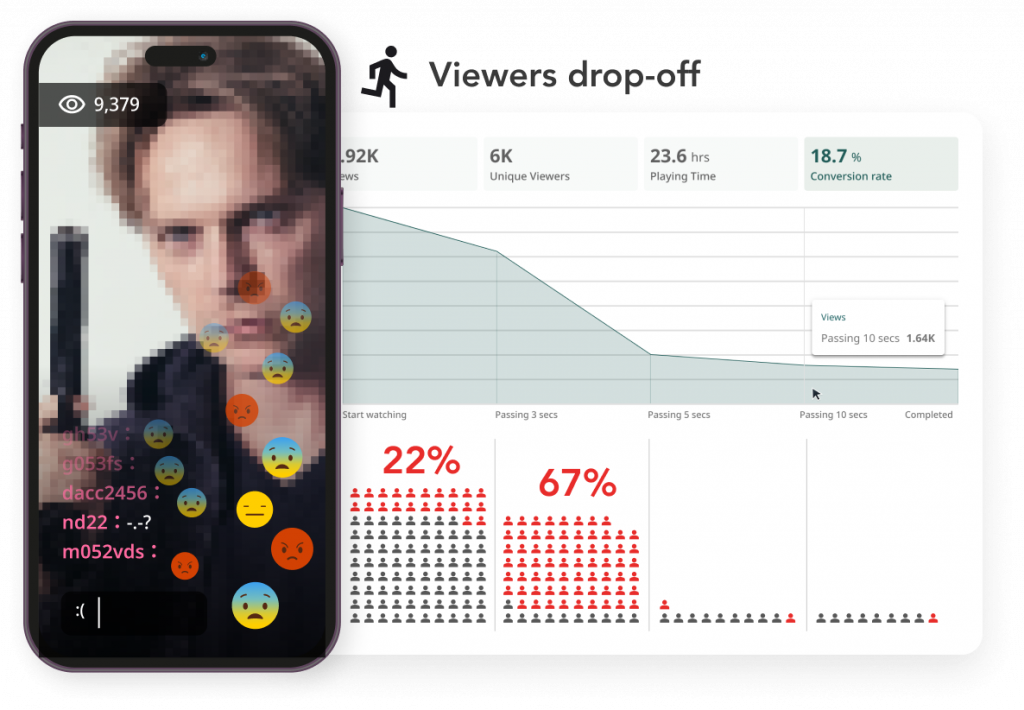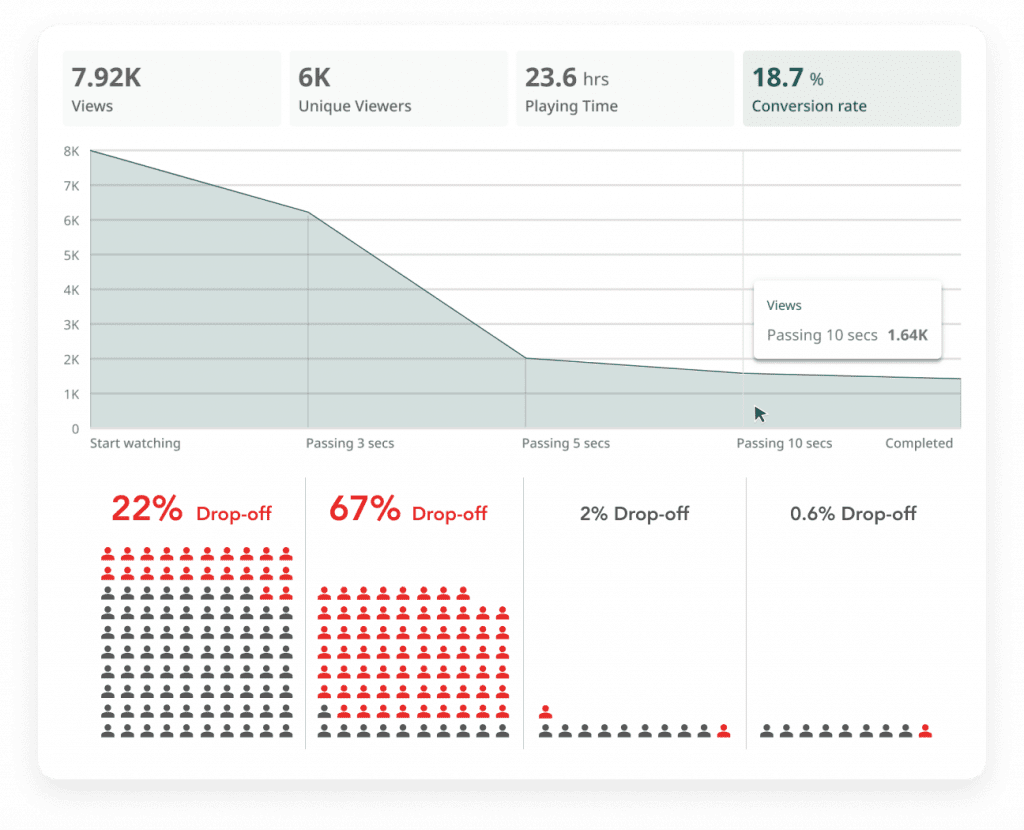This post is also available in: 繁體中文 简体中文
QoS (Quality of Service) is becoming increasingly important in today’s enterprise IT infrastructure. QoS is important for supporting the Internet of Things (IoT) along with voice and video streaming over the network. In this article, we will explore the key factors that contribute to QoS and how Mlytics Video Stream can help optimize video delivery.
Where is QoS needed?
Measurements of QoS include bandwidth, latency, latency variation, and error rate. Voice over IP (VoIP), video conferencing, and video-on-demand, which are sensitive to latency, are examples of high-bandwidth, real-time traffic for which QoS is crucial.
QoS is needed in various network environments and scenarios where it is important to ensure optimal performance and meet specific requirements for different types of network services. Companies use file transfer services and video conferencing apps like Zoom or Google Meet to conduct video conferences.
Even though both are crucial to employee productivity, data packets are less sensitive to latency than voice or video packets. A website that opens one second late will not affect you, but one-second interruptions in video conferences, teleconferences, webinars, meetings, and music broadcasts can ruin your day.
Therefore, no matter how large or small a computer network is, the use of such applications should be considered. It is therefore important and necessary to provide high-quality service.
The purpose of QoS tools is to manage and prioritize packets for optimal use of available bandwidth. As every network has a limited amount of bandwidth, it is important to ensure maximum efficiency. During times of high data packet influx, the network can only send a limited amount of information at any given time. QoS tools help to prioritize certain packets for faster transmission during traffic overload.
Why Is QoS Important?
QoS is important for several reasons. It plays a crucial role in ensuring optimal performance, reliability, and security of network services. Here are the key reasons why QoS is important ;
Minimizing Latency: QoS helps reduce latency, which is the delay in data transmission between network devices. By prioritizing critical traffic and allocating sufficient bandwidth, QoS ensures that time-sensitive applications, like VoIP calls or real-time video streaming, experience a minimal delay. This leads to improved responsiveness and a better user experience overall.
Jitter Reduction: To ensure consistent audio and video quality in real-time applications, it’s important to reduce jitter – which refers to the variation in packet delay. To help achieve this, Quality of Service can manage and minimize jitter by providing consistent and predictable transmission rates for time-sensitive data. These late and potentially out-of-sequence packets appear to end users as flickering monitors, audio and video gaps, and more. QoS minimizes the occurrence of jitter.
Packet Loss Prevention: When there is a lot of traffic or limited resources in a network, packet loss can happen. This can negatively affect communication quality and disrupt the transmission of data. QoS mechanisms prioritize important packets and allocate sufficient resources to reduce packet loss. By managing network congestion and ensuring reliable delivery, QoS helps to maintain the integrity of data transmission.
Security Enhancements: Implementing QoS measures such as traffic shaping and bandwidth allocation can improve network security. QoS prioritizes critical traffic, ensuring important applications have enough resources, and protecting them from potential network attacks. Additionally, QoS can mitigate DDoS attacks by blocking or throttling malicious traffic.
Bandwidth: Bandwidth refers to the amount of data that can be transmitted over a network communication system within a certain period of time. This is typically measured in megabytes per second (Mbps) and should not be confused with speed. Quality of Service is designed to improve bandwidth by prioritizing and allocating resources to data packets that require faster delivery times.
Congestion Management: Sometimes, data traffic carries too much load for it to handle due to erratic connection speed. To solve this issue, routers use QoS to separate packets into different queues. Service-specific queues prioritize certain packets instead of storing all of them in one queue and sending them out in order.
Traffic Shaping: Traffic shaping is a technique used to maintain a consistent flow of network traffic and prevent congestion. It involves controlling the rate at which packets are transmitted and can be used to prioritize specific types of traffic over others to ensure the quality of service.
Prioritization: QoS is the method of giving network traffic different priorities based on importance or specific needs. With QoS, important and time-sensitive data is given priority to ensure that applications like video streaming receive the resources they need and are not negatively impacted by less important traffic.
QoS Use Cases in Video Streaming Analytics
QoS can be used to achieve outcomes such as the following:

- By monitoring the Quality of Service metrics, streaming service providers can maintain and measure the agreed-upon quality standards for video streaming performance, which ensures compliance with Service Level Agreements (SLAs).
- Analyzing QoS metrics can help identify network issues that could affect video streaming quality, such as network bottlenecks, latency issues, or bandwidth constraints. This data is useful for optimizing network infrastructure and improving streaming performance overall.
- Streaming providers utilize QoS metrics to enhance the quality of video content delivery and gain valuable performance insights across various regions and platforms.
- This information helps optimize content delivery strategies, such as selecting the most efficient CDN or optimizing caching and edge server placement.
- To optimize network performance in an enterprise environment, you can allocate bandwidth for external or internal use, or both. You can also apply Quality of Service to regulate upload and download traffic, or just one of them. Our priority is to ensure low latency for traffic that generates revenue and is important to customers.
Benefits of Quality of Service (QoS) in Video Streaming
Prioritizing the quality of QoS in video streaming offers many benefits, including better user experience, improved video quality, efficient allocation of resources, and optimized network performance. Streaming providers who prioritize QoS can provide exceptional video streaming services, gain a competitive edge, and promote business growth.
Quality of service ensures high performance for critical applications requiring high bandwidth for real-time traffic:
- Traffic can be managed more effectively by administrators.
- As well as ensuring the availability of the network, it also ensures the availability of the applications that run on it.
- Critical applications have access to necessary resources to ensure successful operation.
- Data is transported efficiently and securely through the network without causing disruptions for the user.
- Efficient bandwidth use eliminates the need to upgrade, resulting in reduced costs.
Last Words
Delivering a superior Quality of Service is essential for any video streaming platform or content provider. By understanding and optimizing each stage of the video delivery workflow, Mlytics Video Stream ensures a seamless and engaging viewer experience. From content ingestion and transcoding to content distribution, adaptive bitrate streaming, network optimization, and viewer experience, Mlytics Video Stream ensures excellent quality of service for video content.



